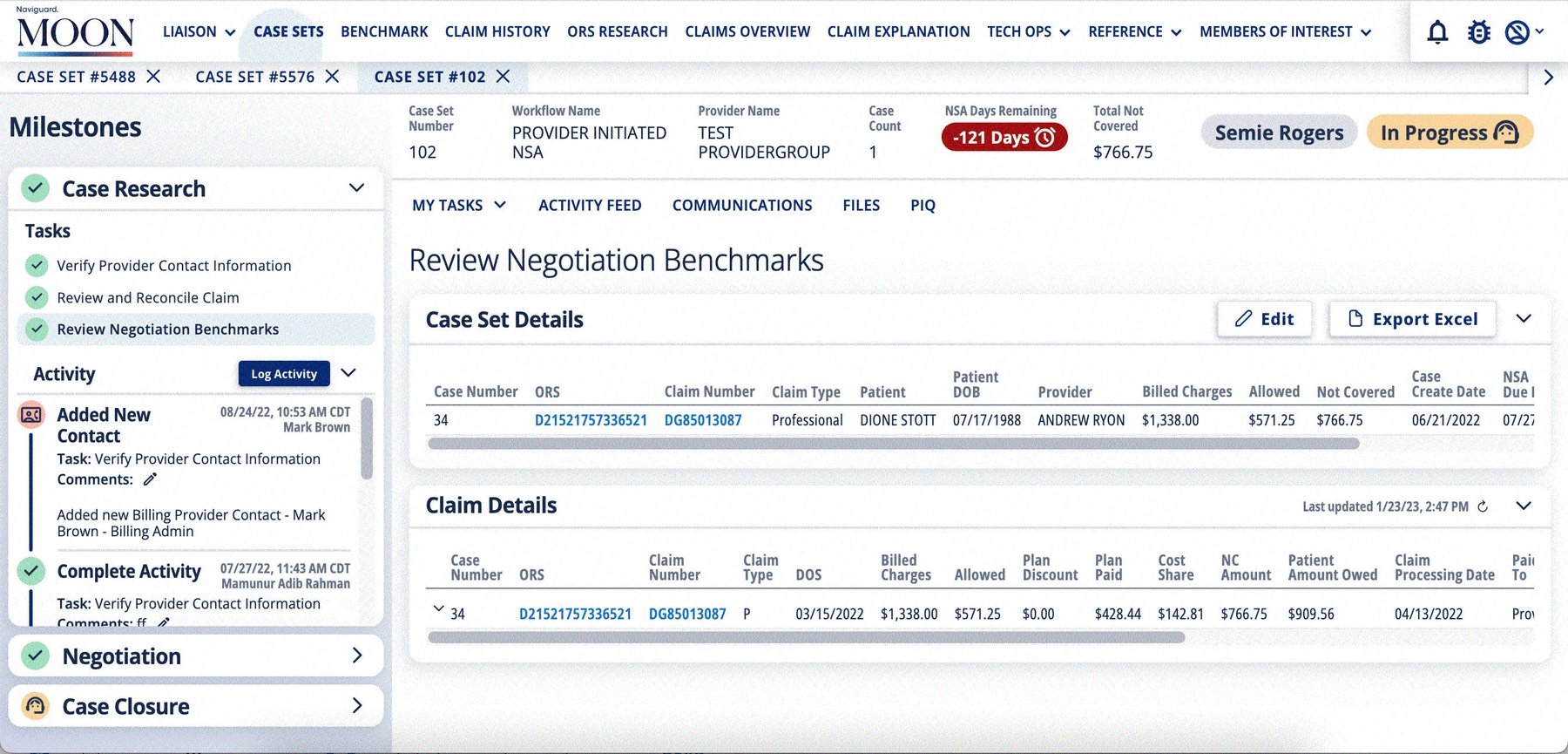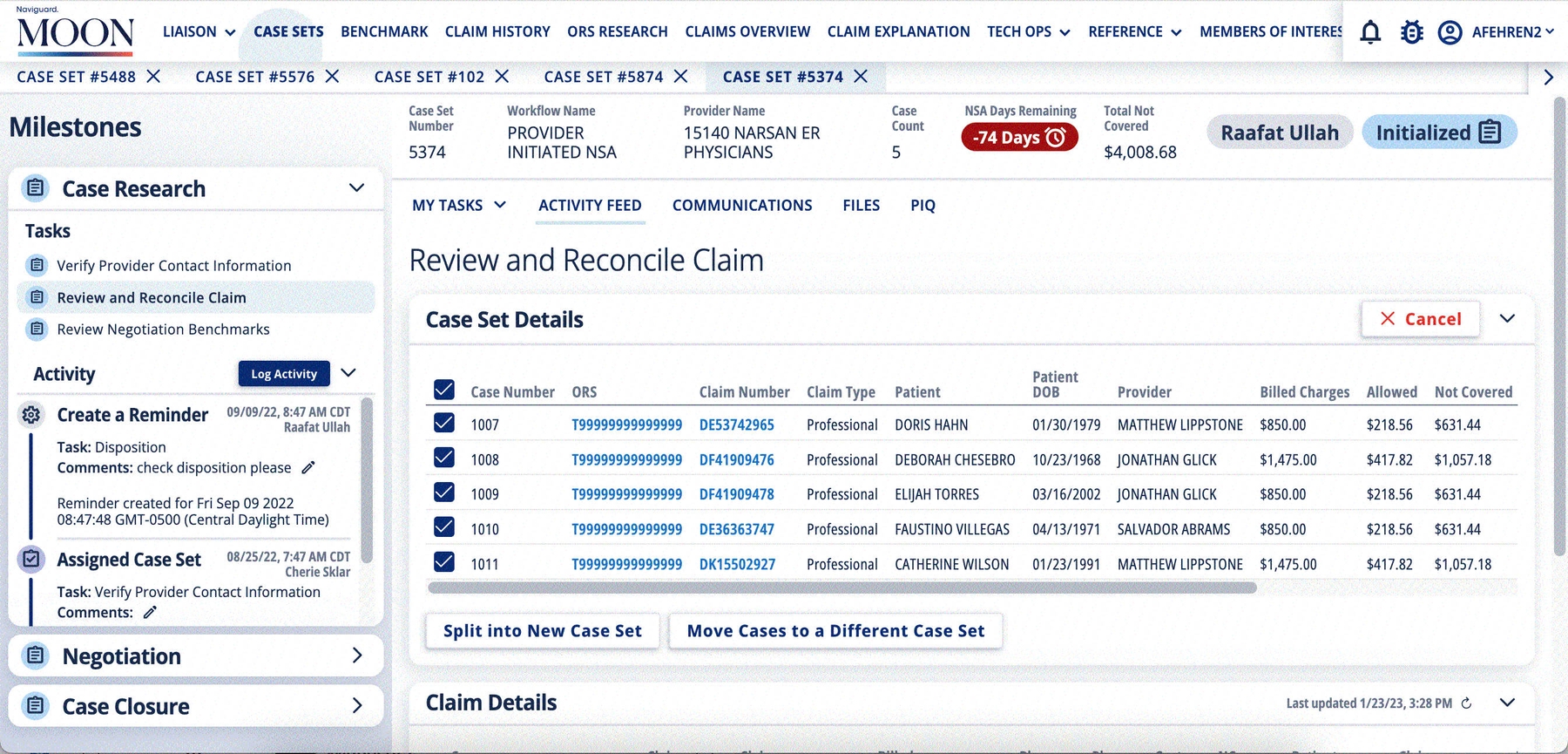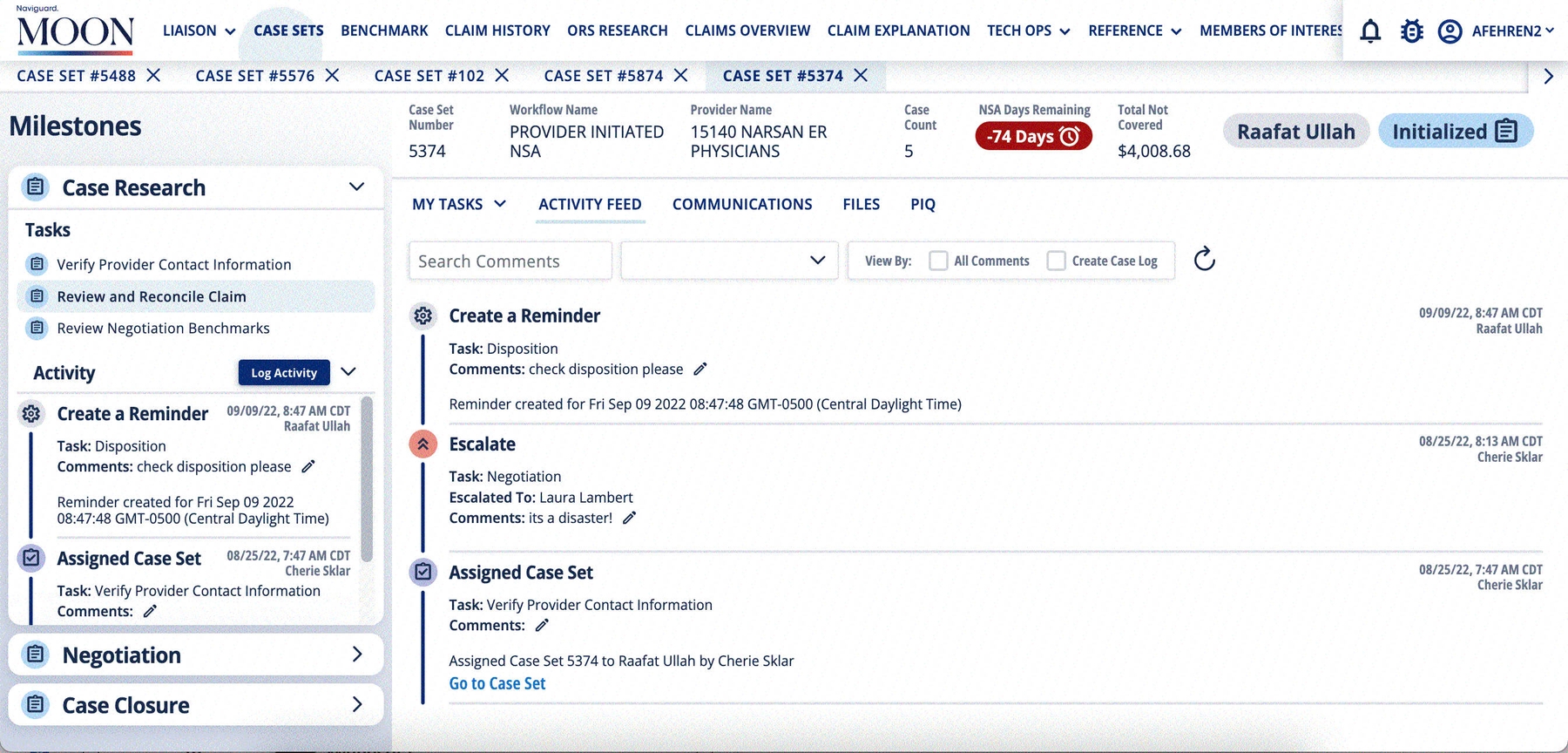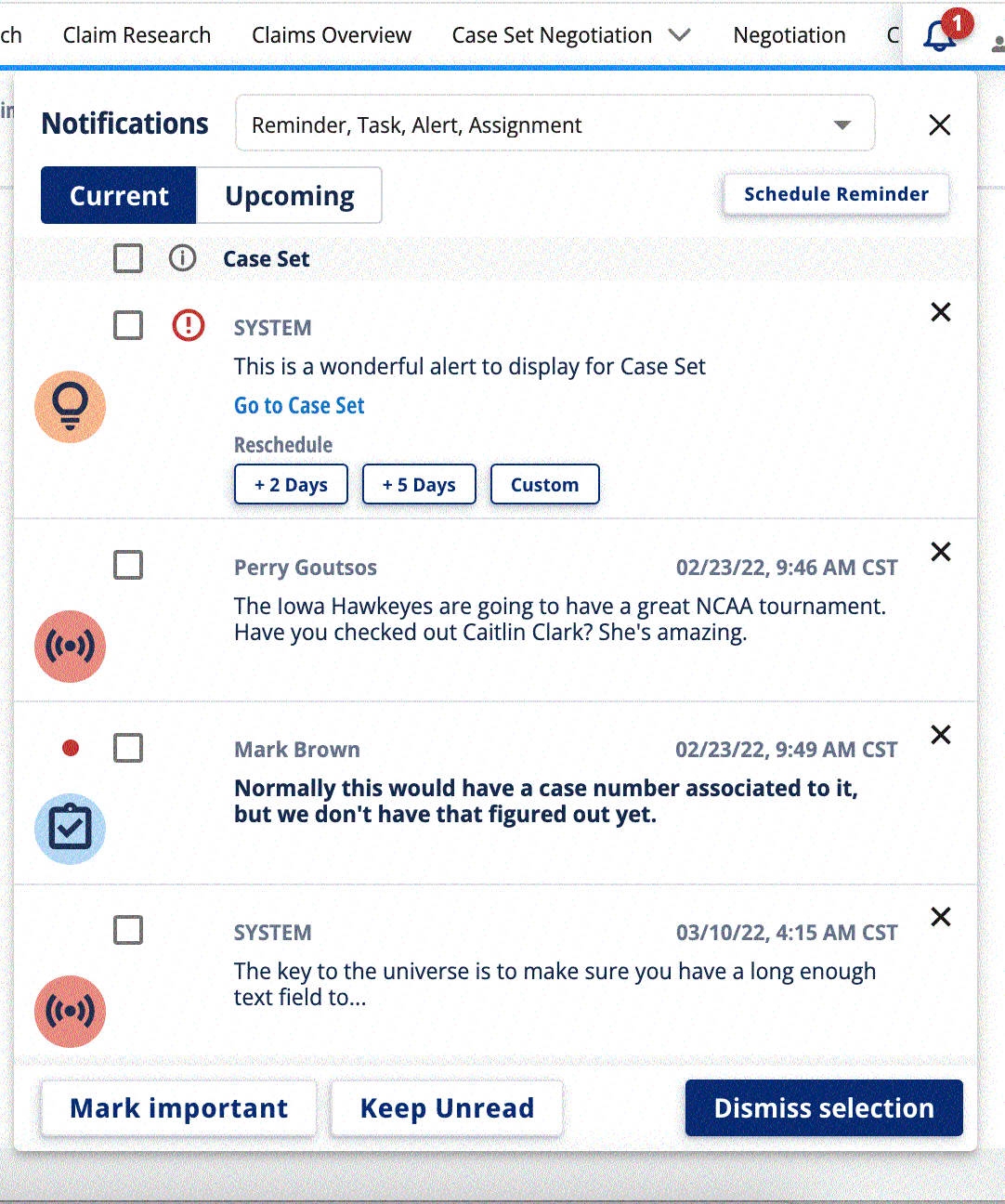Redesigning a flagship claim negotiation application for increased efficiency
The passage of the No Surprises Act in 2022 was hugely beneficial for healthcare consumers. If a patient visited an out-of-network (OON) provider, or received care from a OON provider in an in-network(INN) facility without their knowing, they would only be billed an the INN rate. For example, let's say Natalie delivers a baby at an INN hospital, but the attending anesthesiologist delivering the epidural is OON (a very commonn scenario). Under the NSA, the insurance company will only bill Natalie at the INN rate. Hooray Natalie!
With Natalie's portion taken care of, UHG sends the claim data to Naviguard to negotiate the remaining payout.
The Problem
In the pre-existing application, liasons would get assigned cases for negotiation one at a time. For every claim submitted by a provider, a separate case needed to be opened, and a separate negotiation needed to be made. The claim would move through a series of steps, represented by different tabs in the application.
A lack of flexibility
It was difficult for a claim to move backwards in process—which would happen frequently when liaisons discovered that there was an error in the submitted claim. If an error was found, they would have to close the case, open a new one, and start over.
A lack of efficiency
Over time, we learned that providers would agree to a reimbursement for a large group of related claims. For instance, They might agree to 105% of the going Medicare rate for all chin stitches, regardless of how much the provider billed individually. Once that agreement was reached, negotiation details and documentation would be entered for each claim—a very labor-intensive process. If only there was a way to group claims together so that this process only needed to be repeated once per provider...
The solution
We redesigned the app around the concept of a case set. A case set is a group of claims that all share something in common. For the pilot, the common factor in case sets is the provider. To structure the design, we decided on a task-based approach (whereas the previous iteration was based on pages). The workflow is divided into milestones and tasks, and the selected task determines what components load in the main panel. In the example below, the "Review Negotiation Benchmarks" task loads the "Case Set Details" and "Claim Details" components. This exemplifies the underlying design philosophy for the app:
For any given task I may need to do, the data needed to complete it should be at arm's reach.
The Liaison should not have jump back and forth between pages, and even external apps, to complete the task at hand. By implementing modular architecture, compoenents can be included in any task where they are useful. The left app panel serves as both task-based navigation, and a progress bar that shows how far a case set has progressed.
One of the most powerful design choices of the application is that cases are dynamic. Liaisons can add, remove, and transfer cases between case sets. As a practical example, if a provider agrees to a given reimbursement rate for 40 out of 50 cases in the set, the other ten cases can be moved to a new case set to be negotiated separately.
Details
The addition of an activity log allows a liaison to quickly get caught up on case activity. Anywhere iconography is used in the application, tooltips are used so that the semantic context is never more than a quick hover away.
The negotiation task and offers component allows liaisons to track the offer history.
The notification menu, showing three notification types: a reminder (with quick button reschedule), an alert, and an assignment.
Outcome
This redesign netted several large improvements to Naviguard's work model:
- Despite the huge increase in the volume of submitted claims due to the passage of the NSA, Naviguard is able to handle the increased volume with only minor additions to its existing liaison head count.
- Providers get reimbursed faster because negotiations take less time and agreements are reached faster.
- More agreements are reached, which means that fewer cases enter the costly and lengthy NSA arbitration process.
- Migrating off of Salesforce and onto an app built on Angular and microservices means Naviguard's tech team is longer limited on what components they can build.
- New look and feel to celebrate a major milestone for the company and incorporate new branding supplied by an agency.
- Improvements to the user experience and accessibility of the application.
- I got lots of anecdotal feedback from liaisons and other stakeholders after launch. Lots of people applauded the efficiency with which they could work cases. They loved the new look and feel. The application felt sleek, fast, modern, and—my favorite—happy.





